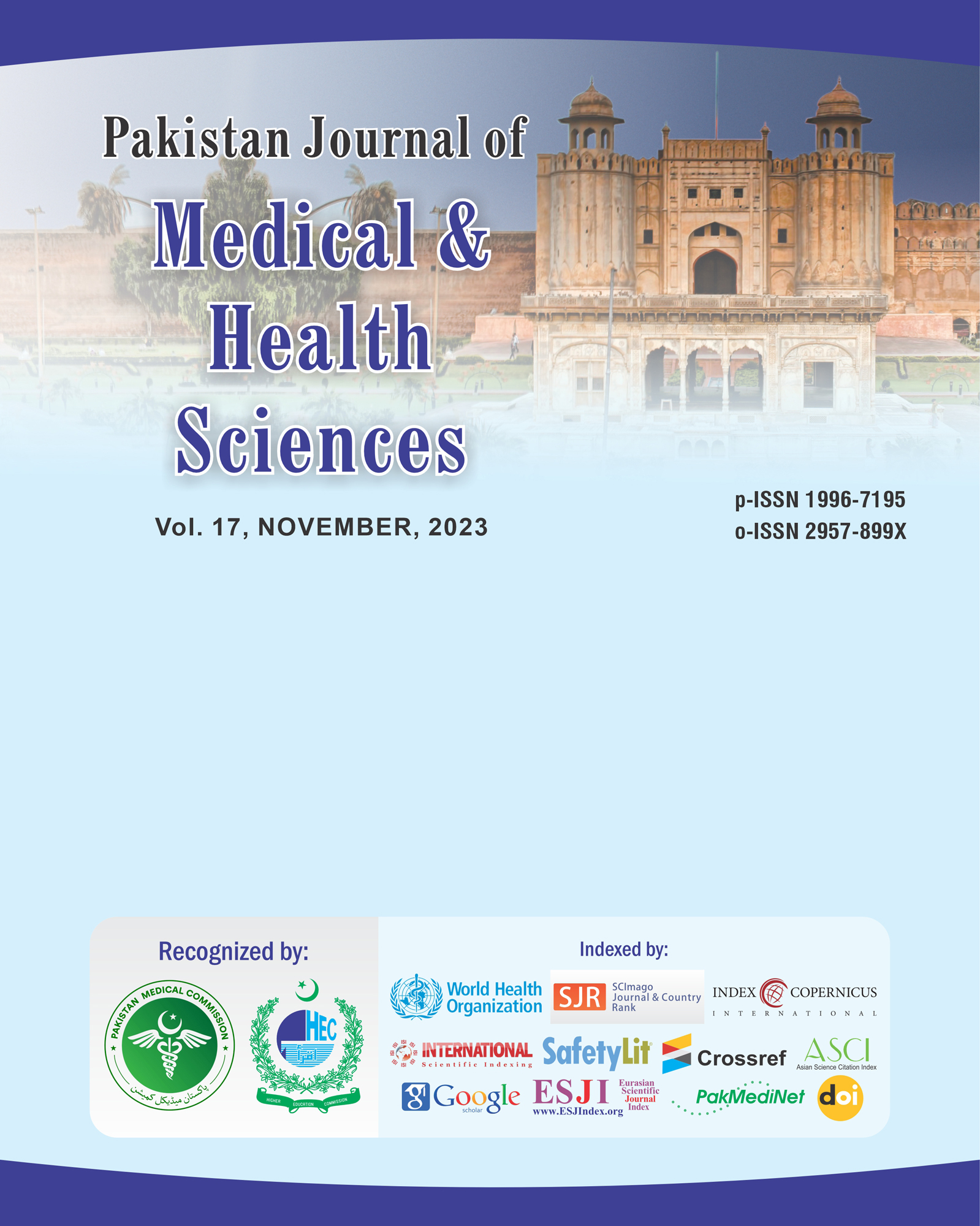The Management of Lower Ureteric Stones: A Comparison of Silodosin and Extracorporeal Shock Wave Lithotripsy with Regard to Efficacy and Safety
DOI:
https://doi.org/10.53350/pjmhs20231711225Abstract
Objectives: To compare the efficacy and safety of silodosin versus extracorporeal shock wave lithotripsy for the management of lower ureteric stone.
Study design: Randomized controlled trial
Place & Duration of Study: Conducted at Liaquat University of Medical and Health Sciences Jamshoro during from the period September 2022 to August 2023.
Methods: Total 110 patients of either gender with ureteric stone were included. All the cases were equally divided in to two groups i.e. Group I in which patients received extracorporeal shock wave lithotripsy and group II patients were given 8mg silodosin orally for 3 weeks and advised to discontinue if stone passage.
Results: Majority of patients were male in Group I and II 36 (65.45%) and 37 (67.27%). Mean age in group I was 37.42+7.24 years while in group II, the mean age was 36.55+6.87 years. The success rate in term of clearance of stones, Group I had 72.73% while Group II had 90.91%. The difference was statistically significant p-value 0.012. Complications were more in ESWL group as compared to silodosin group p-value <0.05.
Conclusions: The silodosin is more efficacious and safe than extracorporeal shock wave lithotripsy for elimination of ureteric stones.
Keywords: Ureteric Stone, Silodosin, Extracorporeal shock wave lithotripsy
Downloads
How to Cite
Issue
Section
License
Copyright (c) 2023 Sajjad Ali, Iftikhar Ahmed, Farman Ullah, Muhammad Owais Khan, Muhammad Kashif Iltaf

This work is licensed under a Creative Commons Attribution 4.0 International License.


